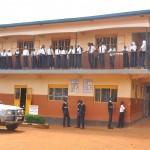Database Search
The List of Secondary Schools in Nansana, Uganda
Discover Top Secondary Schools in Nansana, Uganda Near Me. Read Reviews and Share your Experience by Leaving a Review
We found 2 companies
Nansana Secondary School.
Uganda Nabweru - Bwaise Road, Nansana
Nansana Secondary School. is a Secondary School in Uganda.The School is a Private Sponsored School. The School is found in Nabweru division, Nansana Municipality, Wakiso District.

Verified
St Joseph' Secondary School. Nansana
Kyadondo, Nabweru, Nansana
St Joseph' Secondary School. Nansana is a Secondary School in Uganda.The School is a Catholic private Sponsored School. The School is found in Wakiso District and in Nabweru Sub-County.
Verified
Filter by City
Related Categories
- Schools 5
- Adventist Schools0
- Boys Schools0
- Catholic Schools0
- Dance Schools0
- Elementary Schools0
- Fashion Schools0
- Girls Schools0
- High Schools0
- International Schools0
- Islamic Schools0
- Music Schools0
- Nursery Schools3
- Pre-School0
- Pre-School0
- Primary Schools0
- Private Schools0
- Public Schools0
- Religious Schools0
- Secondary Schools 2